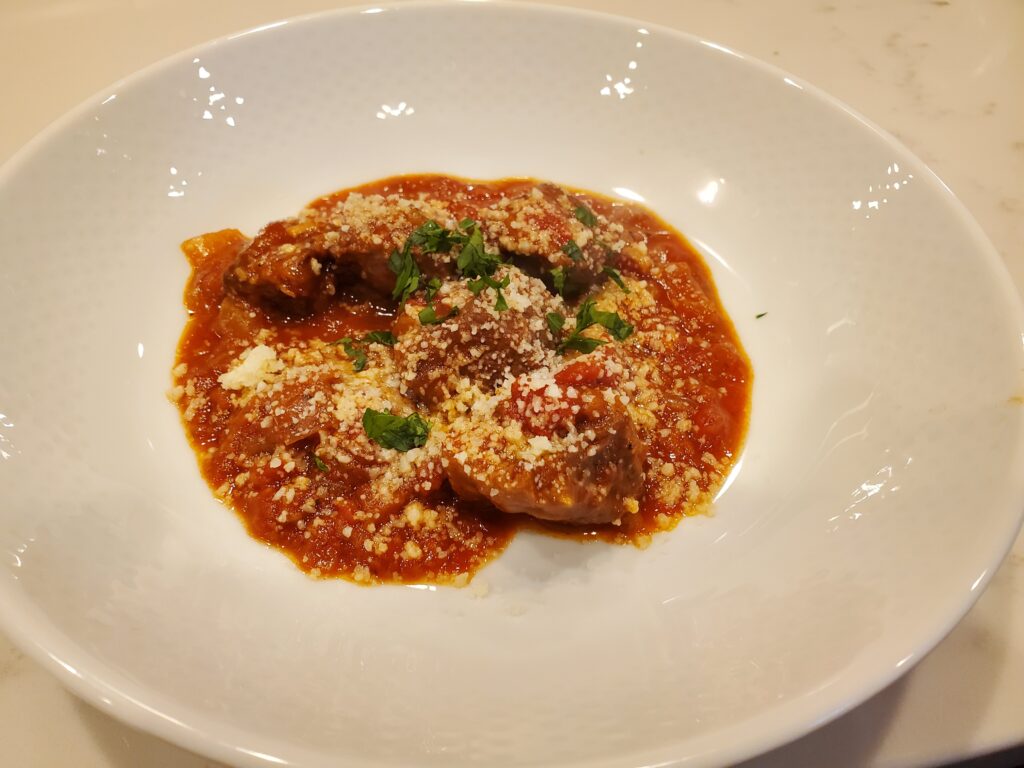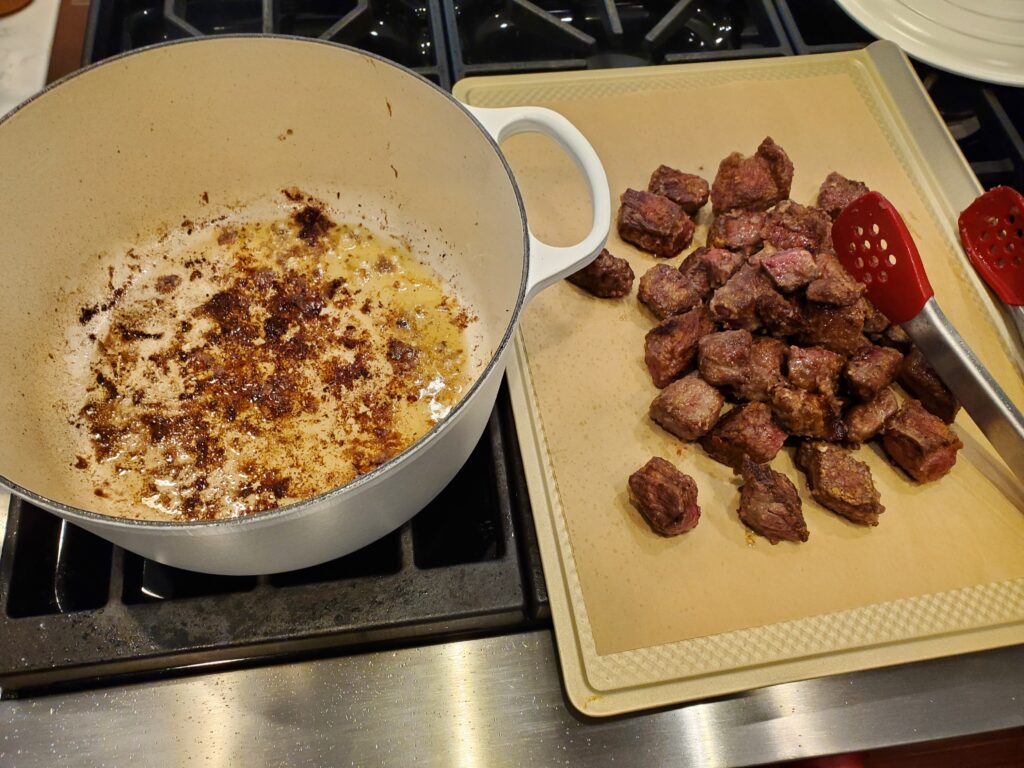Dad’s goulash recipe came from his parents kitchen. Remember that Poppy’s family came to Iowa from France and then Egypt. Cloves are used in meat dishes in the Middle East. That is the most likely way our tasty goulash came to our grandparents in Iowa. I don’t imagine it was a regional dish from Des Moines. Ragu seems to be a variation of the one pot meals or casseroles so very popular in the “fly-over” states. I have noticed that the carb dish differs from region to region. It is usually rice here in coastal Georgia. Rice plantations abound in our area. We know the path of mashed potatoes from the Irish. Noodles came from all over Europe and spread with the immigrants. Our father loved nothing more than to use his palette and his sense of smell to ferret out unusual flavor combinations. He used marjoram liberally. We were so lucky to have the flavor experiences so early in life. It wasn’t the norm in the days when restaurant dining was rare. Home cooking was what we grew up on. Thanks for nudging my brain cells.
Thanks for the details. I’d forgotten about the marjoram.
We were enjoying my recreation of the family recipe for goulash. Thank you for your help in resurrecting this classic dish. We are curious whether Nancy remembers Mommy cooking this for her as a child. If she does, maybe Franklin and his family had similar food memories. Bobby must remember the unique taste. I wish Mike could taste it once again. At least it is recorded now.
Feel free to take credit for the attached recipe. I’ve pasted it below for easy editing.
We really enjoyed the recipe. It could win a contest, honestly! Let me know what you think.
Bredimus Family Goulash

This dish is one of my favorite food memories. Partly, because I’ve never tasted anything like it. Also, it was not like our family’s typical meals. The main flavors in the dish are beef, onions, whole cloves, and tomato – served over spaghetti noodles. We kids feared biting into a whole clove so we searched to find them hidden on our plate. The tiny green can of Kraft grated parmesan cheese was a welcome sight for the children since we were allowed to shake us much as we liked onto our plates.
The dish was a family treasure for more than 120 years. This is my faithful adaptation of the family classic. It is been updated and hopefully improved without loss of its character or comfort. Enjoy!
Ingredients:
2 lbs. beef chuck-roast cut into one-inch cubes
4 tablespoons all-purpose Flour
3 Tablespoons olive oil
2 whole yellow onions diced
8 cloves minced garlic
1 cup red wine (preferably Cabernet, burgundy, or another dry red)
1 cup canned beef broth
2 large (28 oz,) cans Roma tomatoes. San Marzano from Italy are best. Crush them in your hand.
2 whole dried bay leaves
14 whole cloves (add less or more to taste). Hint: use less and add powdered clove at the end if needed.
3 Teaspoons Hungarian paprika
3 Teaspoons Kosher salt (or less to taste)
1 Teaspoon fresh ground black pepper
1/2 Teaspoon dried Thyme
1 Teaspoon dried Marjoram (you can substitute dried Oregano)
Serve over al Dente spaghetti, top with freshly grated Parmesan cheese. We sprinkle Italian red pepper flakes over the plates while serving.
Directions:
Cube the beef chuck-roast, chop the two onions and mince the garlic. Set aside.
Prepare the beef in two batches to avoid crowding the pan. You’ll be rewarded with gorgeous browned meat and a smooth sauce.
Place half the uncooked cubed beef and half the flour in a plastic bag or bowl. Add salt, pepper, dash of Thyme, and dash of Marjoram. Toss the meat to evenly coat with flour and spices.
Over medium heat Sauté the first batch of meat in the olive oil in an enamel Dutch oven. Remove to a plate when browned all over.
Flour the second batch of meat and Sauté as above.

Add the chopped onions, garlic, and paprika to the pot and cook until transparent.
Pour the red wine into the pot and de glace the browned bits from the pot bottom. Cook off the alcohol, then add the beef stock.
Put the reserved first batch of cooked beef back into the pot.
Add the 2 cans of crushed tomatoes.
Add all the remaining ingredients to the pot (whole cloves, bay leaves, thyme, marjoram, salt, and black pepper)
Cover with the pot lid and finish on the stove (simmer) or in the oven at 325 degrees. Cooking time is 2 ½ hours. The flavors are better if served the next day.
Boil the dried spaghetti in salted water with no oil. Reserve some of the pasta water. Cook for two minutes under the recipe time and finish cooking it in the sauce. Add pasta water until sauce is perfect consistency.
I’ve attempted to iron out some of the problems as I recall them. For example, I put the whole cloves inside a tea strainer or cheese cloth to avoid accidently biting into one. The stew meat was sometimes tough and fatty, so I recommend cutting your own cubes of chuck-steak. The sauce was watery, so I brown the beef in flour which later thickens the sauce. Lastly, we were served large slices of onions but I dice them finely with no loss of flavor. Go ahead and use onion slices to be authentic.
